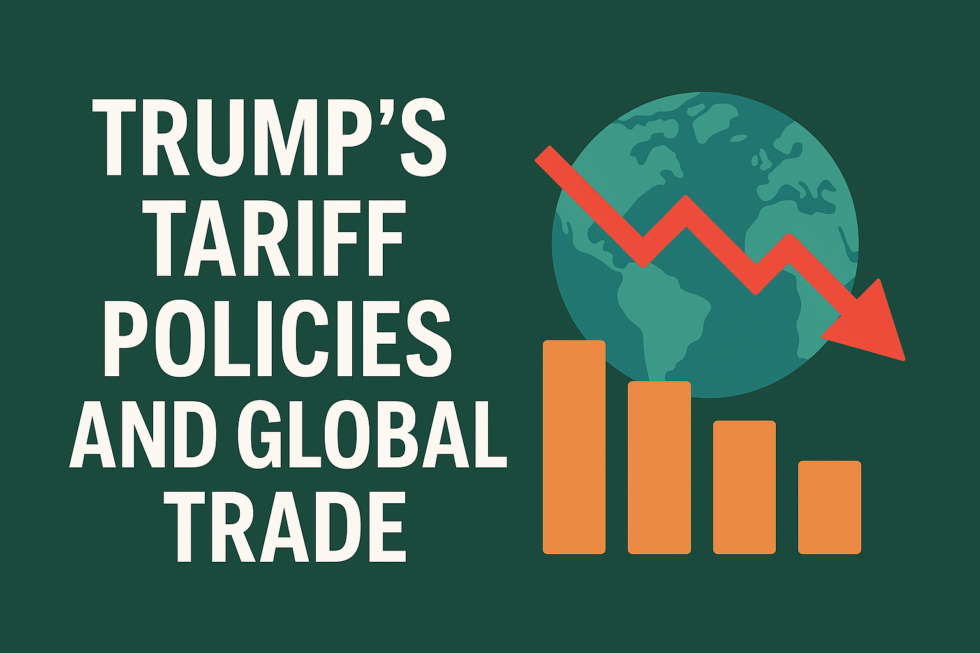
Introduction
The rise of protectionist policies under former U.S. President Donald Trump marked a significant shift in global trade dynamics. By imposing tariffs on a wide range of goods—especially from China—Trump’s administration sent shockwaves through international markets. This blog explores the far-reaching effects of those tariff policies on global trade, economies, and the potential long-term consequences for countries like India.
Understanding Tariffs
Tariffs are taxes levied on imported goods, designed to make foreign products more expensive and encourage the consumption of domestic alternatives. The Trump administration introduced these measures with the goal of protecting American industries, most notably steel and aluminum. However, the impact of these tariffs extended far beyond U.S. borders, affecting global trade flows and diplomatic relations.
Immediate Economic Reactions
The announcement of new tariffs often triggers swift reactions in global financial markets. Stock indices fluctuate as investors assess the potential disruption to international supply chains. Industries heavily dependent on imports—such as technology, automotive, and electronics—experience heightened uncertainty. This volatility forces businesses and investors to rethink their strategies in response to evolving trade risks.
Impact on Global Supply Chains
Today’s global supply chains are deeply interconnected, with companies sourcing components and raw materials from multiple countries. Trump’s tariffs disrupted this fragile ecosystem, prompting firms to reevaluate their procurement strategies. Many businesses faced increased operational costs, which were often passed down to consumers in the form of higher prices for everyday goods and services.
Consequences for Developing Economies
Developing countries like India, which play a crucial role in global supply chains, were not immune to the impact. As American companies sought to offset rising costs, they shifted suppliers or scaled back orders, leading to a dip in export demand. This unpredictability can hamper economic growth, especially in export-driven sectors. Moreover, such uncertainty often discourages foreign investment and causes businesses to postpone expansion or hiring plans.
The Rise of Trade Wars
The initial wave of U.S. tariffs sparked a series of retaliatory actions from affected nations, igniting a global trade war. China, for example, responded by imposing tariffs on a wide range of U.S. goods, including key agricultural exports. This tit-for-tat strategy escalated tensions and made international trade more volatile. Businesses around the world were left to navigate a complex and unpredictable tariff landscape.
Long-Term Implications for Global Trade
Trump’s tariff-driven trade policy may have lasting effects on the structure of global commerce. Countries are increasingly seeking to diversify their trade partnerships to reduce dependency on any single market. This could result in the formation of new trade blocs and alliances, particularly among emerging economies. Additionally, nations are exploring ways to boost domestic production to shield themselves from external shocks—a strategy aligned with self-reliance movements like India’s Atmanirbhar Bharat.
India’s Strategic Challenges and Opportunities
For India, Trump’s tariffs present both challenges and opportunities. While reduced export demand may hurt short-term growth, it also creates space for India to:
- Attract multinational companies looking to shift manufacturing out of China.
- Strengthen bilateral trade agreements with the EU, ASEAN, and the Middle East.
- Promote homegrown industries through initiatives like Make in India.
India’s ability to adapt to these shifting dynamics could determine its position in the future of global trade.
Conclusion
Trump’s tariff policies have ushered in a new era of trade relations—one marked by protectionism, uncertainty, and shifting alliances. The ripple effects on global supply chains, developing economies, and the escalation of trade wars underscore the fragility and complexity of modern international trade. As countries navigate this evolving landscape, the lessons learned from this period will shape future trade strategies, economic policies, and diplomatic relations.
In an increasingly interconnected world, no nation can afford to go it alone. Whether Trump’s approach ultimately strengthens or weakens the global economy remains a topic of debate—but its influence is undeniably far-reaching.






